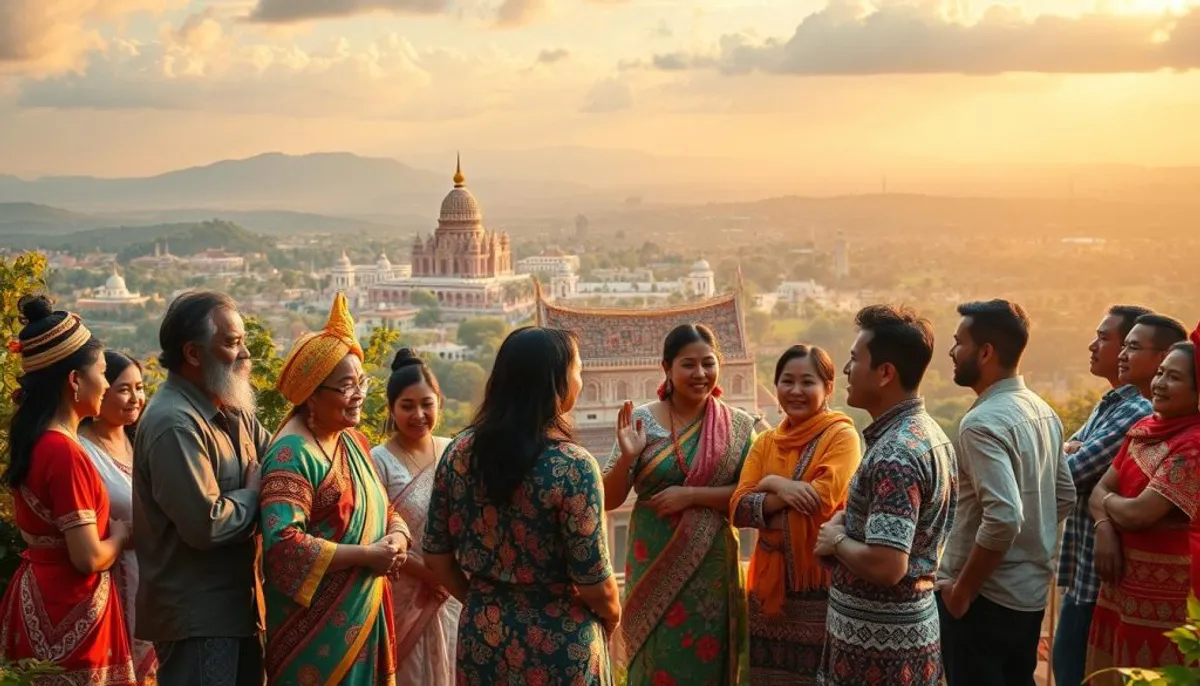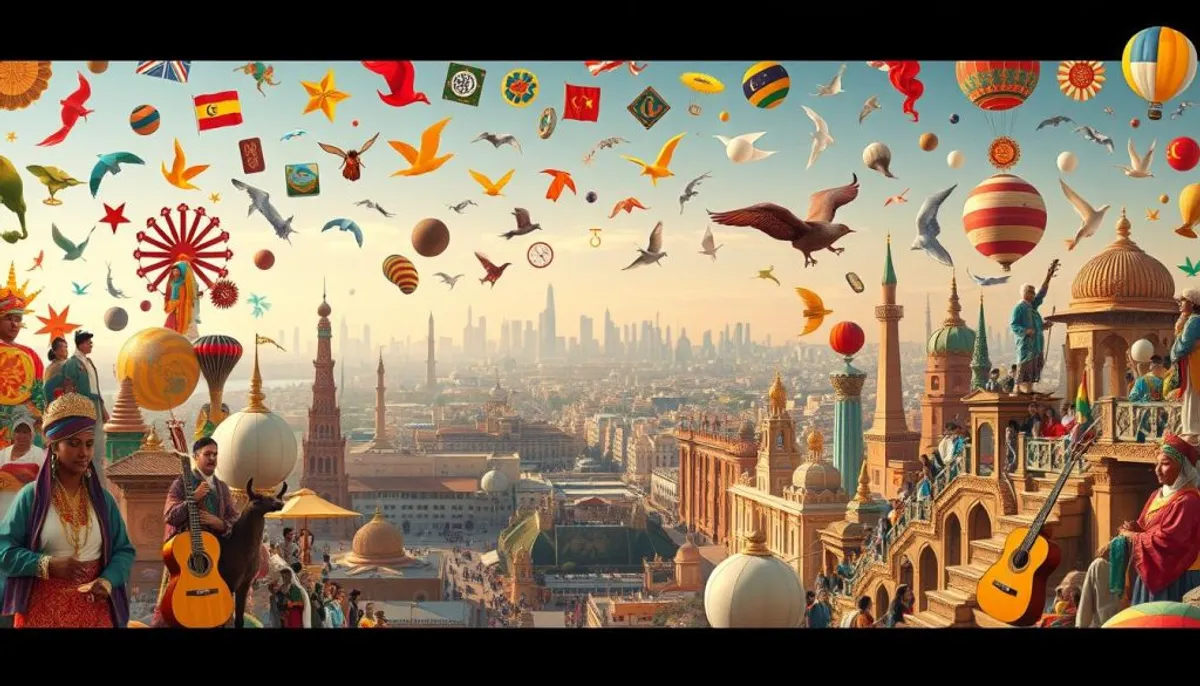The hierarchy of cultures generates keen interest in the social sciences. Cultural relativism, a fundamental concept in ethnology, urges us to reconsider our judgments about diverse societies. It contrasts with ethnocentrism, which tends to judge other cultures through the lens of our own.
In 2012, the awarding of the Nobel Prize in Literature to Bob Dylan reignited discussions about artistic hierarchies. This choice shook traditional categories, questioning the distinction between "minor art" and "major art." Pascal Ory, a renowned historian, contributed to this reflection, placing the abolition of hierarchies between artistic genres at the heart of his argument.

Bernard Lahire, in his work "The Culture of Individuals" (2004), outlines the history of hierarchy systems. He highlights that cultural classifications evolve over time and through social transformations. In a world where the boundaries between "scholarly" and "popular" are fading, is it possible to rank cultures?
The debate on cultural relativism pushes us to examine our own prejudices. It encourages us to consider each culture in its context, without falling into an absolute relativism that would deny any possibility of intercultural dialogue. This reflection is essential to grasp the cultural diversity that surrounds us.
Cultural Relativism and Its Theoretical Stakes
Cultural relativism, a fundamental concept in the study of cultural diversity, raises profound questions about our understanding of diverse societies. In 1952, UNESCO initiated a major debate on the contribution of races to human civilization. This debate marked a turning point in our reflection on the clash of civilizations.
The Methodological Conception of Relativism
Claude Lévi-Strauss, a renowned anthropologist, provided a scientific and moral response to racism. He emphasizes that cultural diversity is a natural phenomenon, often misunderstood. This methodological approach encourages the study of each culture in its own context, without prejudice.
The Symbolic Autonomy of Cultures
The idea of the symbolic autonomy of cultures suggests that each society has its internal coherence. However, ethnocentrism remains a widespread identity reflex. Primitive populations often refer to themselves using terms that exclude others from their humanity, illustrating a self-centered worldview.
The Limits of Absolute Relativism
Absolute relativism presents risks. It can lead to excessive tolerance of problematic cultural practices. Lévi-Strauss concludes that "the barbarian is first and foremost the man who believes in barbarism," inviting critical reflection on our own prejudices in the face of cultural imperialism.
| Concept | Definition | Implication |
|---|---|---|
| Cultural Relativism | Study of cultures in their context | Respect for diversity |
| Ethnocentrism | Worldview centered on one's culture | Risk of prejudice |
| Symbolic Autonomy | Internal coherence of each culture | Complexity of cultural exchanges |
Can Cultures Be Ranked: Exploring the Contemporary Debate
The debate on the ranking of cultures remains relevant in our globalized world. Cultural globalization raises complex questions about diversity and power relations between cultures.
The Question of Cultural Diversity
Cultural diversity is at the heart of modern societies. Philosopher Charles Taylor chaired a commission in Quebec in 2007-2008 to assess "reasonable accommodations" in a pluralistic society. His report "The Time for Reconciliation" advocates for open secularism and interculturalism, although these conclusions are debated.
The Power Relations of Cultural Domination
Acculturation and unequal cultural exchanges persist. Taylor identifies three discomforts of modernity: excessive individualism, the primacy of instrumental reason, and the risk of "soft despotism" despite formal democracy. These dynamics influence implicit cultural hierarchies.

The Impact of Globalization on Cultural Hierarchies
Cultural globalization transforms the relationships between cultures. Cosmopolitanism is developing, but tensions remain. A study on the aggregation of philosophy in France illustrates these issues:
| Criterion | 2022 | 2023 |
|---|---|---|
| Open Positions | 73 | 80 |
| Present Candidates | 643 | 727 |
| Selection Rate | 11.4% | 11% |
| Admitted Women | 43% | 38% |
These figures reveal persistent disparities, particularly by gender, despite a willingness to be open. The debate on the ranking of cultures thus remains relevant in a world seeking balance between diversity and unity.
Legitimate Culture and Mechanisms of Social Distinction
Legitimate culture is fundamental in social distinction in France. It stems from the ideas of Marx and Weber, highlighting the importance of power relations. Pierre Bourdieu defined cultural legitimacy, showing how some cultures are valued while others are ignored.
A study among journalism students illustrates this phenomenon. Among 25 respondents, none bought "Voici," considering it socially worthless. This cultural hierarchy reveals the soft power of dominant cultural institutions.
Cultural imperialism manifests through the transmission of cultural capital. The privileged classes inherit a cultural heritage, unlike the popular classes. Bourdieu identified this symbolic violence, showing that the popular classes accept the supremacy of classical culture.
| Aspect | Legitimate Culture | Popular Culture |
|---|---|---|
| Social Perception | Valuable | Less valuable |
| Transmission | Family Heritage | Less structured |
| Legitimation | Cultural Institutions | Slow Process |
Cultural legitimation is constantly evolving. Cultures once marginalized, such as jazz, have been legitimized by institutions like France Culture. This change reflects the evolution of cultural hierarchies and the influence of soft power in redefining cultural norms.
The Interactions Between Popular Cultures and Elite Cultures
The distinction between popular cultures and elite cultures is gradually fading in our modern society. This phenomenon is partly explained by acculturation and cultural globalization, two processes that redefine traditional cultural boundaries.
The Phenomenon of Acculturation
Acculturation plays a crucial role in the rapprochement of cultures. This process of cultural exchanges allows various forms of expression to influence each other. For example, street art, once considered popular, now finds its place in prestigious art galleries.

Cultural Exchanges and Their Dynamics
Cultural exchanges are intensifying in the era of cultural globalization, including the influence of vietnamese customs. Geographical boundaries are fading, allowing for a smoother flow of ideas and artistic practices. This dynamic enriches cultures while challenging established hierarchies.
Questioning Cultural Boundaries
The boundaries between popular and elite cultures are becoming increasingly blurred. This evolution is illustrated by the adoption of diverse cultural practices by different social groups. For example, rap music, initially associated with urban culture, is now studied in universities and recognized as a legitimate form of artistic expression.
| Cultural Aspect | Before | Today |
|---|---|---|
| Street Art | Considered vandalism | Displayed in museums |
| Rap Music | Marginalized | Studied at university |
| Street Food | Popular | Recognized gastronomy |
This evolution of cultural interactions reflects a more open and inclusive society, where artistic value prevails over traditional social distinctions.
The Evolution of Cultural Hierarchies in the Digital Age
The digital age has profoundly transformed established cultural hierarchies. Modern technologies have revolutionized cultural creation and dissemination. They have redefined the criteria of legitimacy and access to culture.
The Impact of New Technologies
In 2018, the cultural and creative industries in France reached a turnover of 91.4 billion euros. Video games, in particular, marked this digital revolution, with a figure of 5.2 billion euros. This evolution underscores the growing importance of digital media in the cultural landscape.
The Democratization of Access to Culture
Internet and digital media have made culture more accessible. General culture, once reserved for an elite, has opened up through compulsory education and modern technologies. This phenomenon is part of cultural globalization, facilitating exchanges and access to works from around the world.
The New Modes of Cultural Legitimation
Cultural distinction criteria are evolving. Soft power is now exercised through digital platforms. The upper middle classes are opening up to products of popular culture, blurring the boundaries between elite culture and mass culture. This evolution challenges established cultural hierarchies.
| Cultural Sector | Turnover (billion €) |
|---|---|
| Books | 6.3 |
| Recorded Music | 0.725 |
| Film | 3.8 |
| Video Games | 5.2 |
| Television | 12 |
Conclusion
The question of whether cultures can be ranked raises profound and delicate debates. Cultural relativism, which sees each culture as unique and incommensurable, encounters the reality of mutual exchanges and influences. Cultural diversity, while celebrated, is marked by dynamics of power and domination.
Popular and elite cultures intermingle, giving rise to syncretic forms such as candomblé or santeria. These phenomena show how cultures can adapt and integrate external elements. Globalization has intensified these exchanges, with a marked influence of Western culture on third-world countries.
Evaluating cultures solely by GDP, life expectancy, or military power is simplistic. Cosmopolitanism offers a rich perspective, encouraging openness and mutual respect while valuing differences. It is therefore wiser to appreciate the uniqueness and contributions of each culture to humanity rather than to rank them.
RelatedRelated articles


